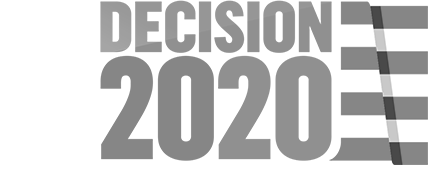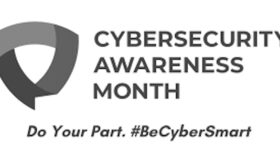Election 2020 – Social Media Takes Action
Social media tech giants like Twitter and Facebook have a vested interest in the outcome of this year’s election. They do not want to find themselves in a negative light when the dust settles.
After the 2016 election the American public and those elected to public office, focused on the impact and influence of social media in the election process, both positive ad negative. Many people believe that by either negligence or sloppiness social media companies are responsible for the political divisions, the spread of hatred and the torrent of misinformation that now embraces the nation. This not a good place to be and they know it.
As a result social media companies are doing their best to be on the side of truth and democracy. Their very existence maybe on the line. They know that too and are acting accordingly.
Social media companies have taken steps to help American’s feel safe that the election will be fair and without misinformation clouding the results.
Twitter has taken steps to insure, first that candidate accounts are secure. Twitter is requiring users with weak passwords to update their logins and will encourage them to enable two-factor authentication. The company will also enable “password reset protection” to prevent unauthorized password resets and impose other measures to protect against hackers.
Twitter says it is taking additional steps to protect accounts internally. These include:
- More sophisticated detection and alerts to help Twitter and account holders respond rapidly to suspicious activity.
- Increased login defenses to prevent malicious account takeover attempts.
- Expedited account recovery support to ensure account security issues are resolved quickly.
These measures will help to prevent politician’s accounts from being used to spread misinformation that appears to be coming from the politician themselves.
But not only are politicians being protected from account take over and the new measures will apply at both the federal and state level. Others being given added protection include political parties and campaigns and gubernatorial races. The requirements will also apply to U.S. news outlets and political journalists.
Twitter is also working to get out the vote and giving people the information they need to register and vote. This includes a “U.S. Elections” tab in Twitter’s Explore menu, where the trending tab and other curated topic lists reside. That tab will serve as Twitter’s central source for hand-picked election news in English and Spanish, debate live streams, state-specific resources and candidate information.
Another step Twitter is taking is the introduction of “Birdwatch.” This is Twitter’s efforts to fight misinformation online. The tool will be added as an option in the drop-down menu where users can also find the Mute, Block and Report buttons. Tweets can be added or flagged to “Birdwatch” from the tweet’s drop-down menu, where other blocking and reporting tools are found. A small binoculars icon will also appear on tweets published to the Twitter Timeline. When the button is clicked, users are directed to a screen where they can view the tweet’s history of notes allowing them to gauge the validity of tweet by seeing the additional content.
The only question is whether everyone on Twitter will be given access to annotated tweets and additional context, or whether this permission will require approval, or only be open to select users or fact checkers.
Another step Twitter has taken in working to encourage people to register to vote. What is described as Twitter’s biggest effort ever to get out the vote the program was launched on National Voter Registration Day. The effort included;
- On National Voter Registration day every person on Twitter in the U.S. received a prompt in their timeline to register to vote or confirm their registration via TurboVote, an online tool from the nonpartisan nonprofit Democracy Works.
- A push alert in the notifications tab guided users to a Twitter Moment with additional voter registration information.
- Twitter promoted the effort with voter registration resources from TurboVote.
- Twitter used a hashtag emoji with #NationalVoterRegistrationDay and #VoteReady to propel conversation.
Another effort by Twitter involves fighting voter suppression. U.S. Twitter users can go to the “report this tweet” drop-down menu and select “it’s misleading about a political election” or “it intends to suppress or intimidate someone from voting” as options. If Twitter agrees that the tweet violates its election integrity policy the user will be asked to remove the tweet. Repeated abusers could be banned from the platform.
SnapChat
SnapChat also stepped into the election arena by registering over 400,000 mostly young and first time voters. This is more than they registered in 2018. In addition SnapChat claims that more than half of the voters they registered actually went out and cast ballots.
YouTube
YouTube is also focused on the 2020 election and the role it plays in the outcome.
YouTube announced that it’s focusing special attention to mail-in voting content and stepping up its efforts to fight misinformation with what it calls “authoritative information.”
Videos that mention voting by mail will have an information panel that directs the user to authoritative info from the Bipartisan Policy Center think tank. YouTube is also adding more information panels that will appear when users search for 2020 presidential or federal Congressional candidates. YouTube has also created new panels on voter registration and how to vote. Those are available in English and Spanish.
Google has also focused on blocking misinformation. Google has changed its auto-complete function so that it will “remove predictions that could be interpreted as a claim about participation in the election” as well as “predictions that could be interpreted as claims for or against any candidate or political party.” Included are anything that sound like claims about voting methods, requirements or status of voting locations will not be shown either. So if you type something like “You can vote by” or “you can’t vote by” into the search box, autocomplete won’t suggest finishing that statement with “phone.”
Google is making a concerted effort to fight misinformation and other election related misdeeds and you can get a closer look at their efforts here.
Among social media companies Facebook is, without a doubt, the largest and most scrutinized. Facebook is the first social media website that comes to mind when one even speaks of social media. And its also the most talked about when comes to misinformation, hate speech and conspiracy theories peddled in cyber space. Facebook is also shaping up to be the biggest target if things go awry in this election.
But Zuckerberg and crew are not about to take the blame with first trying to get things straight. The company has been working overtime to fight the image of a palace for election shenanigans.
First of all Facebook has made an attempt to recruit more poll workers for this years election. Facebook founder Mark Zuckerberg posted the social network’s poll worker recruitment drive on news feeds across the U.S. after the post went live. Anyone over the age of 18 and in the U.S. should see a blue button to “Become a Poll Official.”
According to Zuckerberg Facebook is working to urge as many as 4 million people to not only register to vote but to show up at the polls on election day. There’s a dedicated “Voting Information Center” on everyone’s Facebook page for more about the upcoming election.
Instagram, which is owned by Facebook, is also featuring the Voting Information Center.
Facebook has also added specific notes to political posts on its platform. U.S. Facebook users who post about voting may start seeing an addendum to their messages labels directing readers to authoritative information about the upcoming presidential election.
Now you know.






